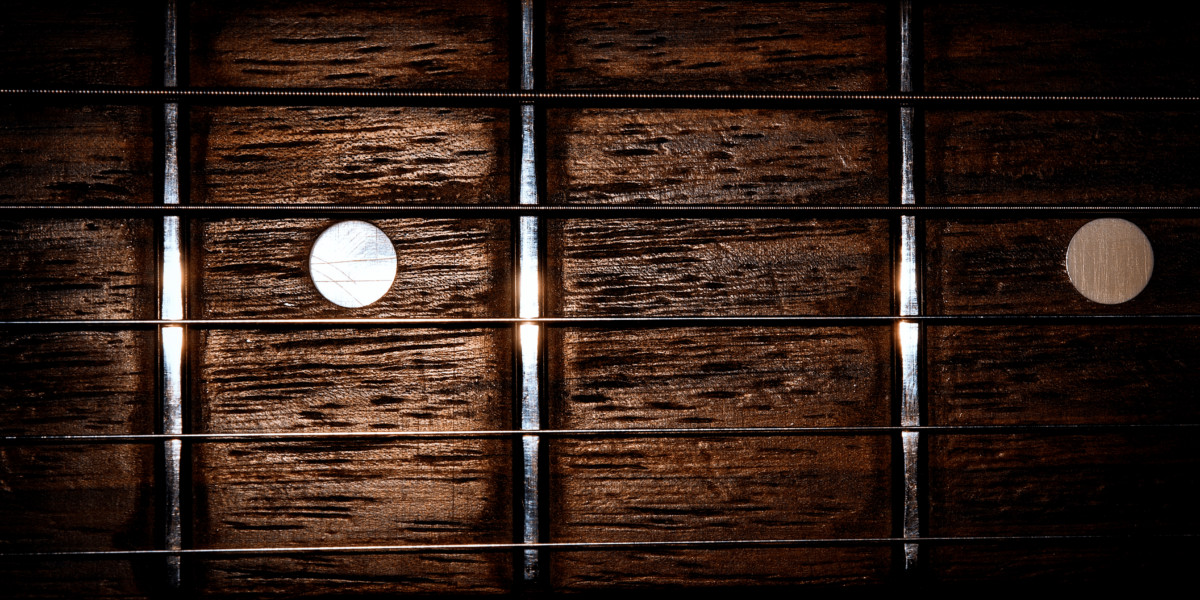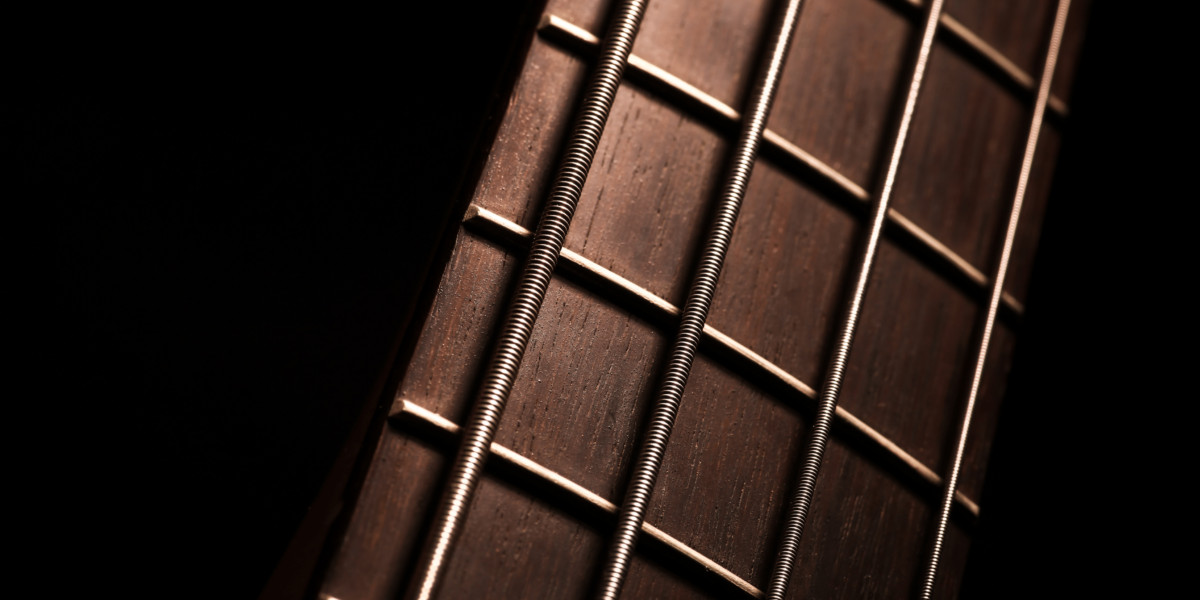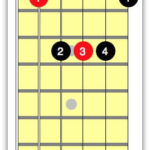Guitar frets are fundamental to playing melodies and chords accurately on a guitar. They are the thin metal strips embedded in the fretboard, and understanding them is key for any guitarist, whether beginner or seasoned player. But one of the most common questions, especially for those new to the instrument, is: just how many frets are on a guitar?
This article will delve into the world of guitar frets, exploring their purpose, the typical number you’ll find on different types of guitars, and why this number matters. We’ll also touch upon fret maintenance to ensure your guitar plays and sounds its best.
Understanding Guitar Frets
What are Guitar Frets?
Guitar frets are precisely positioned metal strips that are inserted along the fretboard or neck of a guitar. They are usually made of nickel silver, an alloy that, despite its name, contains no silver but is composed of copper, nickel, and zinc. This material is chosen for its durability and resistance to wear from the constant pressure of guitar strings. While nickel silver is the most common, other materials have been used, including stainless steel for increased longevity.
Each fret is carefully placed at a specific point to create precise musical intervals. The distance between frets decreases as you move up the neck towards the guitar’s body. This is because as you shorten the vibrating length of the string, the intervals between notes become smaller. The fret itself has a rounded crown, which is the part the string contacts when you press down. Below the crown is a tang that is inserted into a slot in the fretboard, securing the fret in place.
The Purpose of Frets
Frets serve a crucial purpose: they divide the guitar neck into precise semitones, based on the Western musical scale. Without frets, guitars would be fretless instruments, much like violins or cellos, requiring extreme precision in finger placement to play in tune. Frets simplify this process dramatically.
Each fret represents a half step in musical notation. Moving from one fret to the next changes the pitch of the string by a semitone. For example, on a standard tuned guitar, pressing behind the first fret on the 6th (lowest E) string raises the pitch from E to F. The frets act as a guide, allowing guitarists to easily find and play specific notes, chords, and scales across the fretboard with accuracy and consistency. They provide a solid stopping point for the vibrating string, ensuring a clear and defined note. Without frets, the string would vibrate from the nut to the bridge, producing only open string notes.
How Many Frets Do Guitars Typically Have?
The typical range for the number of frets on a guitar is between 19 and 24. However, the exact number can vary depending on the type of guitar, its intended musical style, and even player preference. Generally, acoustic guitars tend to have fewer frets than electric guitars.
Frets on Acoustic Guitars
Acoustic guitars commonly feature between 18 and 20 frets. Classical guitars, a type of acoustic guitar known for nylon strings and fingerstyle playing, often have 18 or 19 frets. Steel-string acoustic guitars, like dreadnoughts or jumbos, usually have 20 frets.
 Acoustic guitar fretboard close-up showing nickel frets on a rosewood fretboard, highlighting the standard fret arrangement for acoustic guitars.
Acoustic guitar fretboard close-up showing nickel frets on a rosewood fretboard, highlighting the standard fret arrangement for acoustic guitars.
While some acoustic guitars might have ventured to 21 or even 22 frets, the higher frets on acoustic guitars are often less accessible due to the body shape and neck joint, particularly on non-cutaway models. Many acoustic guitarists primarily utilize the lower to middle range of the fretboard, typically within the first 12 to 15 frets, where chords and common melodies are easily played. The presence of frets beyond the 15th fret on acoustics is often more for visual symmetry or occasional higher note access rather than core playability for most styles.
Frets on Electric Guitars
Electric guitars generally boast a higher fret count compared to acoustic guitars, typically ranging from 21 to 24 frets. The increased number of frets on electric guitars caters to the playing styles and musical genres they are commonly used for.
The standard for many years was 21 or 22 frets, found on classic designs like Fender Stratocasters and Telecasters. However, as music evolved, particularly genres like rock and metal that often utilize higher registers for solos and lead playing, 24-fret guitars became increasingly popular. Guitars with 24 frets offer a full two octaves per string, expanding the melodic range and providing easier access to high notes.
The tonal characteristics can also be subtly influenced by the number of frets, though this is often debated and less significant than other factors like pickups and wood types. Some players believe that guitars with fewer frets (e.g., 21 or 22) can have a slightly warmer, rounder tone, favored in genres like blues or jazz. Conversely, the extended range of 24 frets is often preferred for genres where high-note access and a brighter, more aggressive tone are desirable, such as in heavy metal or shred guitar styles. Ultimately, the choice often comes down to playing style and personal preference.
Beyond the Number of Frets: Fret Maintenance
While knowing how many frets are on your guitar is important, maintaining those frets is crucial for optimal playability and sound. Over time, frets can wear down, become uneven, or get dirty, affecting the guitar’s performance.
Fret Leveling Explained
Fret leveling is the process of ensuring all frets are at an even height. Uneven frets can cause string buzz, intonation problems, and make the guitar uncomfortable to play. Regular playing can cause some frets to wear down more than others, leading to inconsistencies.
 Close-up of guitar frets being leveled with a fret rocker and sanding beam, demonstrating guitar maintenance for optimal playability.
Close-up of guitar frets being leveled with a fret rocker and sanding beam, demonstrating guitar maintenance for optimal playability.
The process involves using specialized tools like a fret rocker to identify uneven frets and then carefully filing down the higher frets to match the level of the others. After leveling, frets need to be re-crowned (reshaped to their rounded profile) and polished for smooth playing. Fret leveling is a more advanced maintenance task often best left to experienced guitar technicians or luthiers.
Cleaning and Polishing Frets
Keeping your frets clean and polished is a simpler maintenance task that any guitarist can perform. Dirt, grime, and oxidation can accumulate on frets, making them feel rough and potentially affecting string vibration.
 Polished and clean guitar frets after cleaning and polishing with fret guards and polishing compound, highlighting guitar care for enhanced sound.
Polished and clean guitar frets after cleaning and polishing with fret guards and polishing compound, highlighting guitar care for enhanced sound.
Cleaning and polishing frets typically involves removing the strings, protecting the fretboard with fret guards or tape, and then using a specialized fret polishing compound and a microfiber cloth to gently polish each fret. This process restores shine, smoothness, and helps prevent corrosion, contributing to better playability and longevity of the frets.
Conclusion
So, how many frets are in a guitar? Typically, you’ll find between 18 and 24 frets, with acoustic guitars usually having fewer (18-20) and electric guitars generally featuring more (21-24). The number of frets can influence the guitar’s range, playability in higher registers, and even subtly affect tone. Understanding frets and their purpose is fundamental to guitar playing, and taking care of them through regular cleaning and maintenance will ensure your instrument remains a joy to play for years to come. Whether you’re strumming chords on an acoustic or shredding solos on an electric, the frets are your essential guide to musical expression on the guitar.


